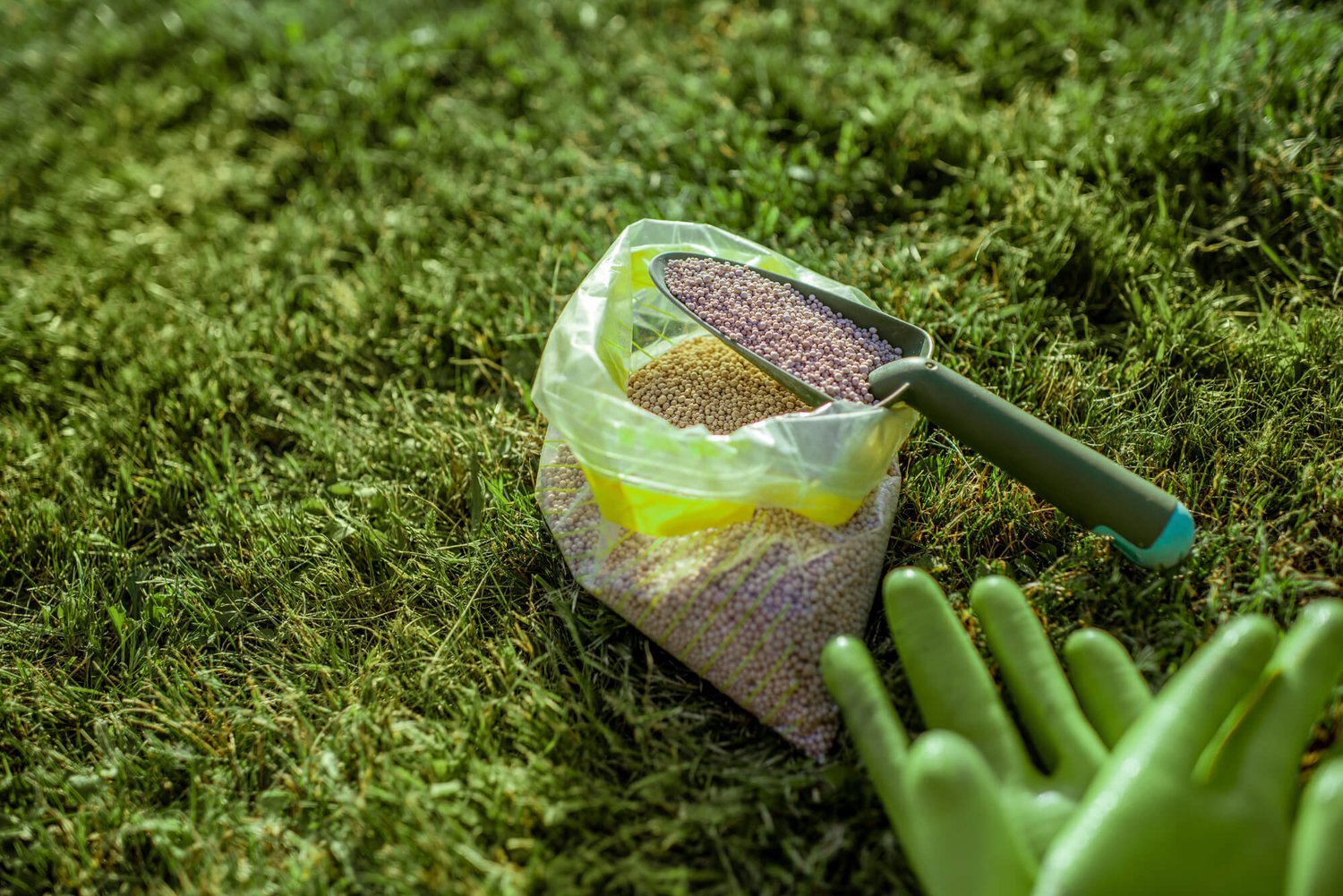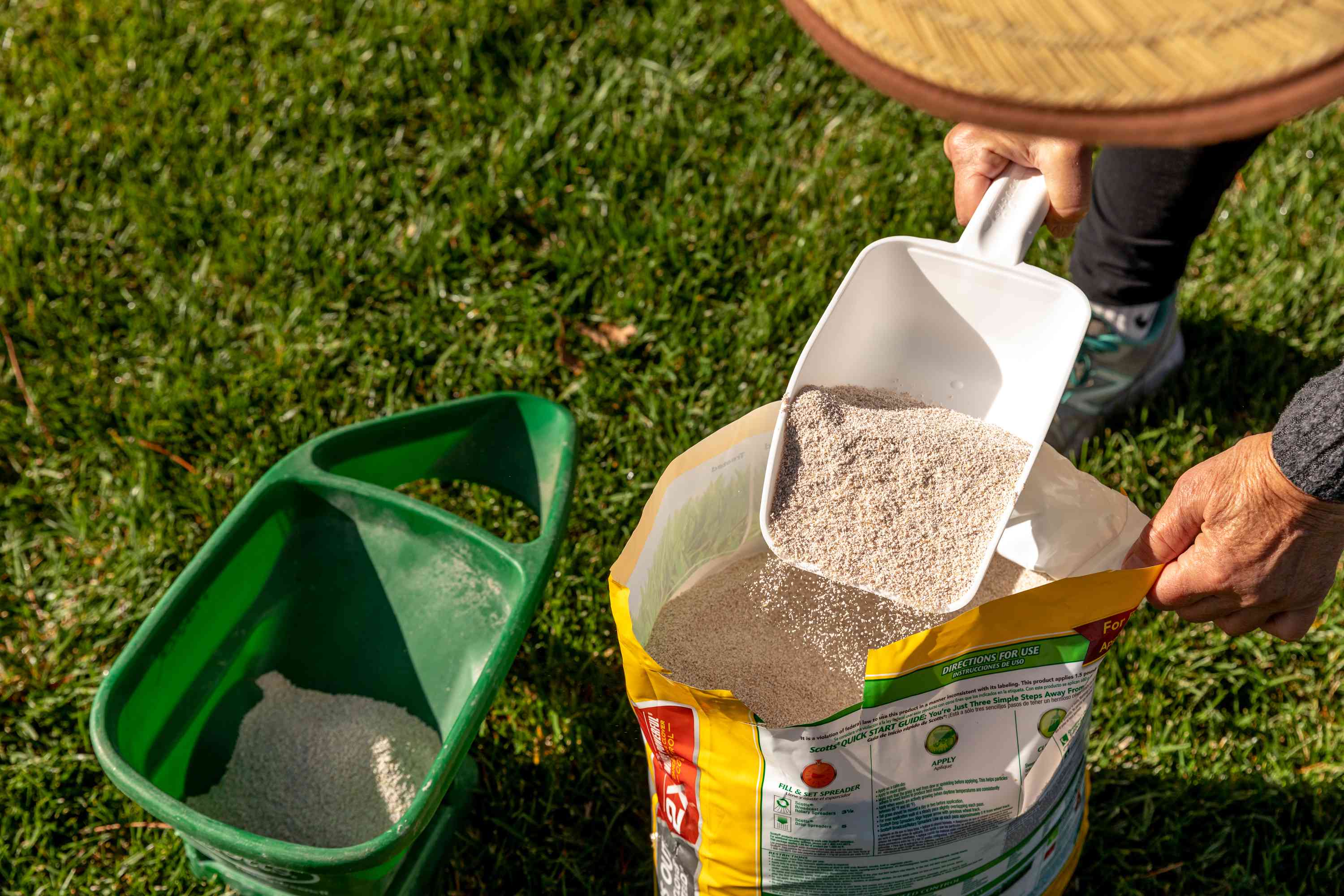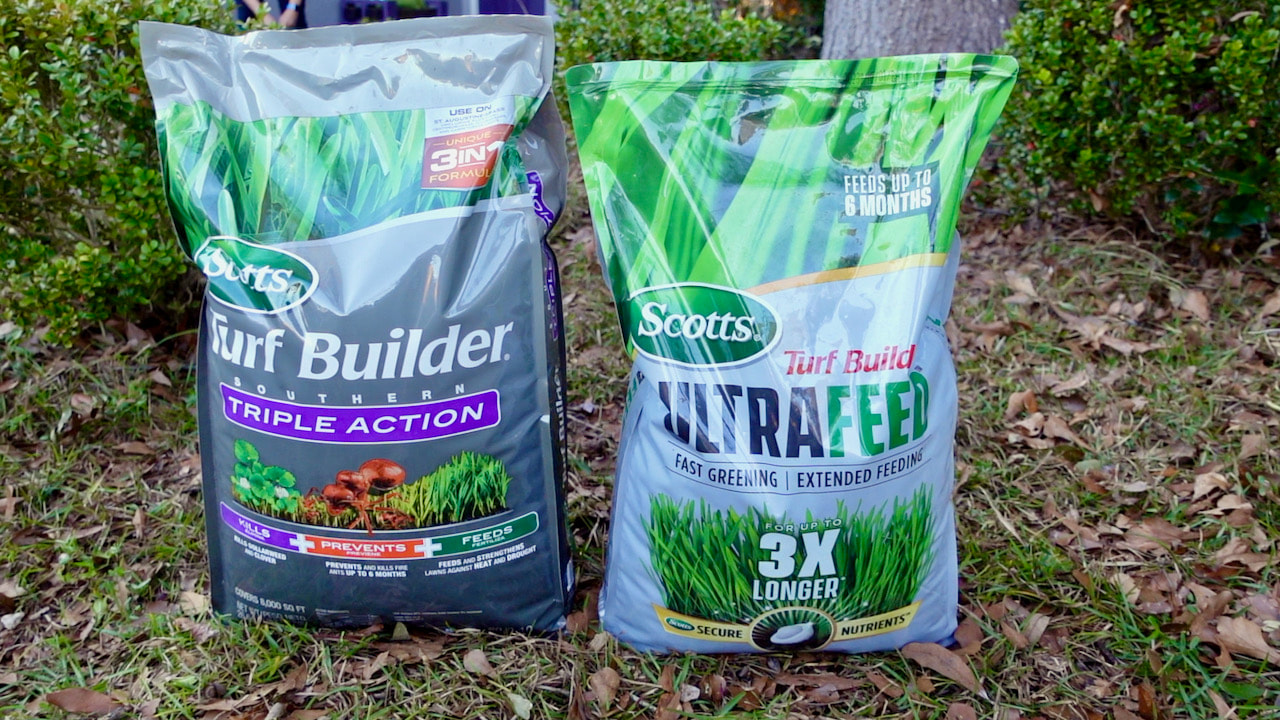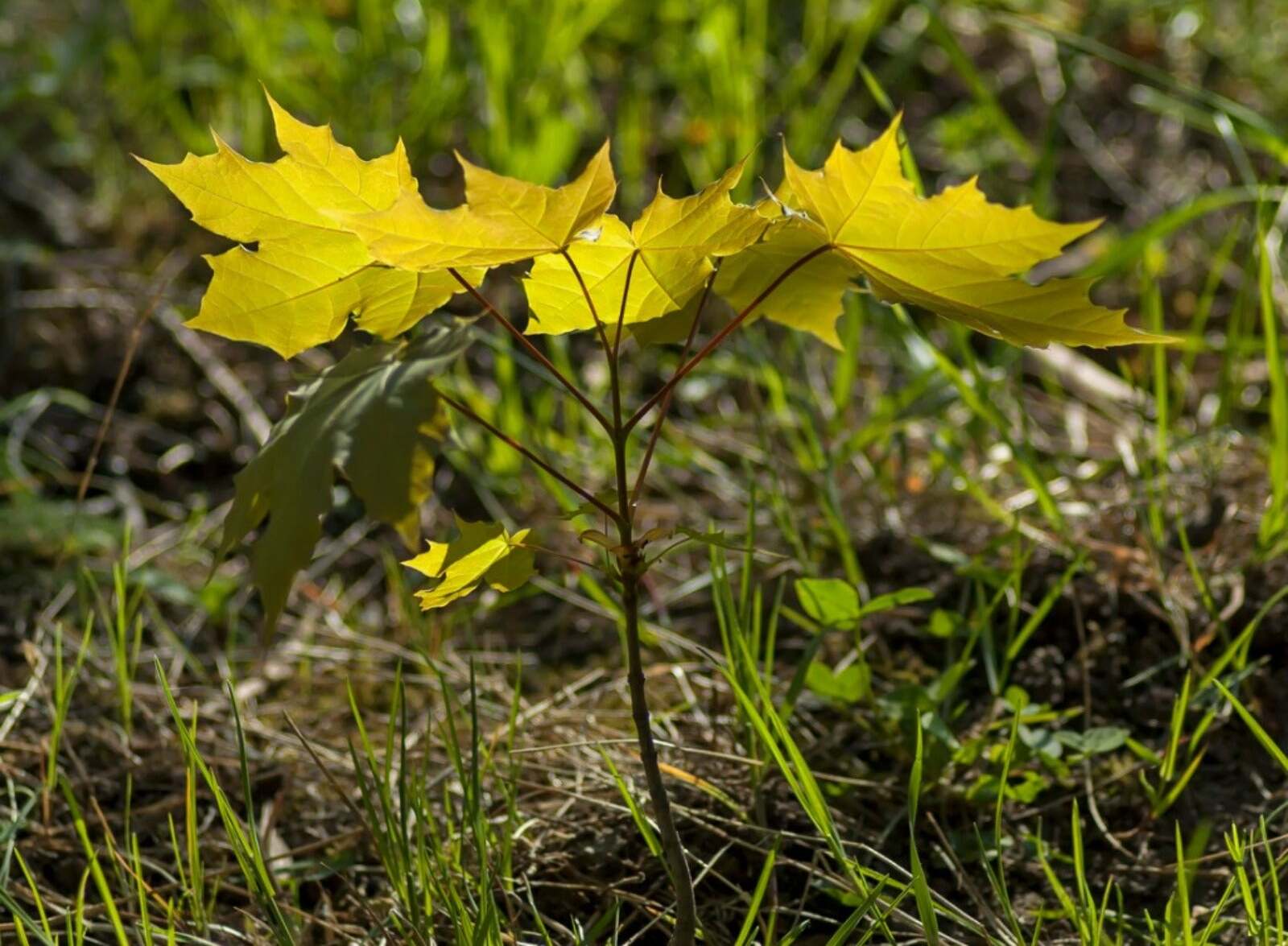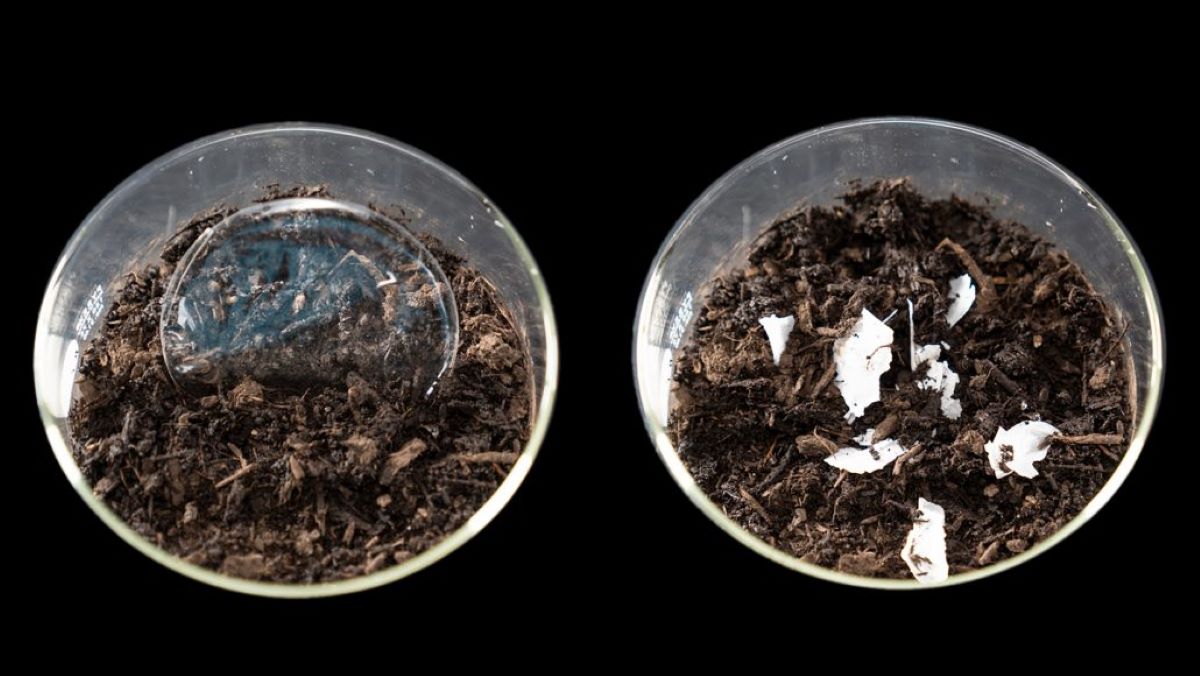Home>Gardening Tips and Tricks>Eco-Friendly Gardening>How To Apply Compost To Lawn
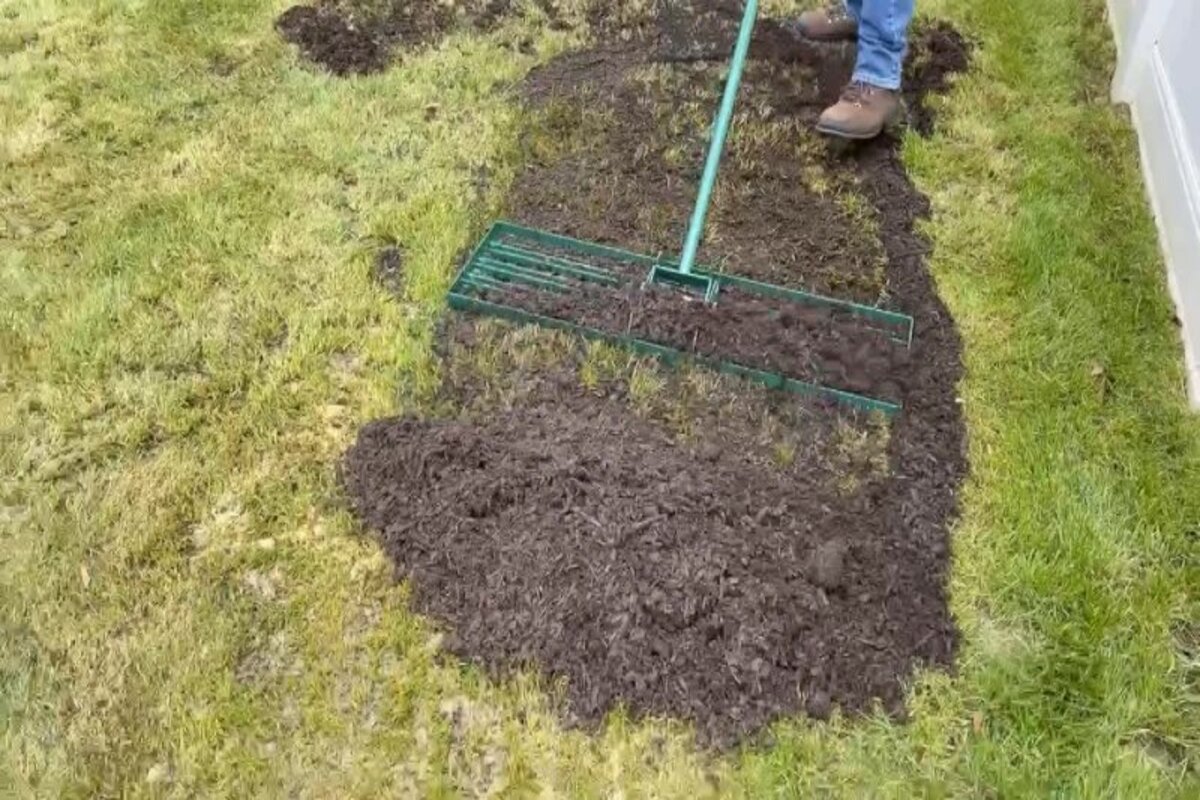

Eco-Friendly Gardening
How To Apply Compost To Lawn
Modified: January 22, 2024
Discover eco-friendly gardening tips on how to apply compost to your lawn effortlessly. Enhance your soil health and promote sustainable practices for a greener, healthier home.
(Many of the links in this article redirect to a specific reviewed product. Your purchase of these products through affiliate links helps to generate commission for Chicagolandgardening.com, at no extra cost. Learn more)
Table of Contents
Introduction
Welcome to the world of eco-friendly gardening! If you’re passionate about nurturing a lush, green lawn while minimizing your ecological footprint, then you’ve come to the right place. In this article, we will explore the ins and outs of applying compost to your lawn, an essential practice in sustainable gardening.
Compost is often referred to as “black gold” for gardeners, and for a good reason. It is a nutrient-rich, organic material that is created through the decomposition of kitchen scraps, yard waste, and other organic matter. Applying compost to your lawn provides a plethora of benefits, ranging from improving soil structure and fertility to enhancing moisture retention and preventing nutrient runoff.
By incorporating compost into your lawn care routine, you’ll not only be nurturing your grass and plants but also making a positive impact on the environment. The use of compost reduces the need for chemical fertilizers, pesticides, and herbicides, which can be harmful to both the environment and human health.
In the following sections, we will delve into the details of how to apply compost to your lawn effectively. You will learn how to prepare your lawn, choose the right compost, calculate the appropriate amount, and properly apply the compost. Additionally, we will provide you with some valuable tips to ensure the success of your compost application.
So, if you’re ready to make your lawn the envy of the neighborhood while promoting eco-friendly gardening practices, let’s get started on this journey to a greener, healthier, and more sustainable lawn!
Understanding Compost
Before we dive into the application process, it’s crucial to understand what compost is and why it is a valuable asset for your lawn. Compost is essentially decomposed organic matter, such as food scraps, grass clippings, leaves, and other yard waste. Through the process of decomposition, these materials break down into a nutrient-rich, dark brown or black substance known as compost.
Compost is often referred to as “nature’s recycling system” due to its ability to transform waste into a valuable resource. This organic material is packed with essential nutrients, including nitrogen, phosphorus, and potassium, as well as a host of beneficial microorganisms.
One of the primary benefits of compost is its ability to improve soil structure. When added to sandy soils, compost helps retain moisture and nutrients, preventing them from leaching away. In clay soils, compost aids in loosening the soil, allowing for better drainage and root penetration. Additionally, the organic matter in compost acts as a sponge, holding onto moisture and releasing it slowly to plants, helping to maintain healthy soil moisture levels.
Furthermore, compost plays a significant role in enhancing soil fertility. As compost breaks down, it releases nutrients in a slow-release form that plants can easily access. This gradual nutrient release promotes long-term plant health and reduces the risk of nutrient runoff, which can negatively impact waterways.
Compost is also instrumental in promoting a biodiverse and thriving ecosystem in your lawn. It provides a home for beneficial microorganisms, earthworms, and other soil-dwelling creatures that contribute to soil health and plant growth. These organisms help break down organic matter further, improving soil structure and nutrient availability.
Now that you have a better understanding of what compost is and its numerous benefits, you are ready to harness its power to transform your lawn into a vibrant, sustainable oasis. In the next section, we will explore the steps involved in preparing your lawn for compost application.
Benefits of Compost for Lawns
Applying compost to your lawn offers a plethora of benefits that contribute to the overall health, beauty, and sustainability of your turf. Let’s explore some of the key advantages of using compost in your lawn care routine:
- Enhanced Soil Structure: Compost helps improve soil structure by increasing its water-holding capacity, promoting better drainage, and preventing soil compaction. Healthy soil structure allows grass roots to penetrate deeply, leading to stronger, more resilient turf.
- Nutrient Enrichment: Compost is a rich source of essential nutrients, including nitrogen, phosphorus, and potassium, that are vital for healthy plant growth. These nutrients are released slowly, providing a steady and sustained supply to your lawn, reducing the need for synthetic fertilizers.
- Improved Moisture Retention: The organic matter in compost acts like a sponge, helping to retain moisture in the soil and reducing water loss through evaporation. This ensures that your lawn receives the water it needs, even during dry periods, while reducing your overall water consumption.
- Enhanced Root Development: Compost fosters the development of strong and healthy root systems in your lawn. Deep, well-established roots provide better access to water and nutrients, making your lawn more resilient to drought, heat, and other stressors.
- Reduced Soil Erosion: Compost helps mitigate soil erosion by improving soil structure and promoting the formation of stable soil aggregates. These aggregates bind together, preventing soil particles from being carried away by wind or water runoff.
- Increased Microbial Activity: Compost is teeming with beneficial microorganisms, such as bacteria and fungi, that enhance soil health. These microorganisms break down organic matter, release nutrients, and suppress harmful pathogens, creating a balanced and thriving ecosystem in your lawn.
- Reduced Environmental Impact: By using compost in your lawn care practices, you can reduce the need for chemical fertilizers, pesticides, and herbicides. This helps minimize water pollution and protect the health of beneficial insects, birds, and other wildlife.
By harnessing the power of compost, you can create a vibrant, sustainable lawn that is not only visually appealing but also environmentally friendly. In the next section, we will discuss the steps involved in preparing your lawn for the application of compost.
Preparing Your Lawn for Compost Application
Before applying compost to your lawn, it is essential to prepare the area to ensure optimal results. Proper preparation sets the stage for effective compost penetration and nutrient absorption by the turf. Here are the key steps to prepare your lawn:
- Mow your lawn: Start by mowing your lawn at a lower setting than usual to help expose the soil surface and remove any overgrown vegetation. This allows for better compost contact with the soil.
- Remove debris: Clear away any debris, such as sticks, leaves, and rocks, from the lawn. This will prevent interference with the compost application and ensure direct contact between the compost and soil.
- Aerate the soil: Aerating the soil involves creating small holes or channels in the ground to improve air circulation and water penetration. Renting a core aerator or using a manual aerator can help loosen compacted soil, allowing the compost to reach the roots more easily.
- Test the soil pH: It’s a good idea to test the soil pH before applying compost. Most lawns prefer a slightly acidic to neutral pH (between 6 and 7). If the pH is too high or too low, you may need to make adjustments to ensure optimal nutrient uptake by the grass.
- Address any soil deficiencies: If your soil test reveals any nutrient deficiencies, it’s important to rectify them before applying compost. This may involve adding specific organic or synthetic fertilizers to the soil to provide the necessary nutrients for healthy grass growth.
- Water the lawn: Give your lawn a good watering a day or two before applying compost. This helps moisten the soil, improving compost contact and absorption. Avoid overwatering, as saturated soil can hinder the effectiveness of the compost application.
Following these steps will create an optimal environment for your compost application and ensure that your lawn receives maximum benefit from the organic matter. In the next section, we will explore the different types of compost available and how to choose the right one for your lawn.
Choosing the Right Compost
When it comes to choosing the right compost for your lawn, it’s important to select a high-quality product that meets the specific needs of your turf. Here are some factors to consider when choosing the right compost:
- Source of compost: Consider the source of the compost material. Ideally, the compost should come from a reputable and reliable source that uses organic materials without any harmful chemicals or pesticides. Look for compost that is certified organic for added assurance.
- Compost maturity: Check the maturity of the compost. Fully matured compost has gone through the decomposition process, resulting in a stable product that is rich in nutrients and beneficial microorganisms. It should have a fine, crumbly texture and an earthy smell.
- Texture and moisture content: Assess the texture of the compost. It should be well-composted and free from large chunks or raw materials. The moisture content should be on the damp side, but not excessively wet or dry. Avoid compost that appears wet and clumpy or overly dry and dusty.
- Nutrient content: Check the nutrient content of the compost. Look for compost that has a balanced ratio of nitrogen (N), phosphorus (P), and potassium (K). This information is usually provided on the packaging or available from the compost supplier.
- pH levels: Consider the pH levels of the compost. Most lawns prefer a slightly acidic to neutral pH range. The compost should have a pH level that is compatible with your soil’s needs, or you may need to make adjustments accordingly.
- Additional additives: Some compost may contain additional additives, such as lime or beneficial microbes. These additives can provide added benefits to your lawn, but it’s important to understand their purpose and potential impacts on your soil and turf before making a decision.
It’s worth noting that you also have the option to make your own compost at home, using kitchen scraps, yard waste, and other organic materials. Homemade compost can be an excellent choice as it allows you to control the quality and ingredients used. However, ensure that your homemade compost is fully matured before applying it to your lawn.
By considering these factors, you can choose a compost product that will provide optimal nutrients and organic matter to improve your lawn’s health and vitality. In the next section, we will discuss how to calculate the amount of compost needed for your lawn.
Calculating the Amount of Compost Needed
Calculating the right amount of compost needed for your lawn ensures that you apply the correct quantity for optimal results. Here’s a simple method to determine the amount of compost required:
- Determine the area: Measure the length and width of your lawn using a tape measure. Multiply the two measurements to calculate the total square footage of your lawn. For irregularly shaped lawns, divide them into smaller sections and measure each separately.
- Determine the depth: Decide on the desired depth of compost application. A recommended depth is between ¼ to ½ inch. Generally, ¼ inch is sufficient for annual applications, while ½ inch is suitable for lawns in need of more significant improvements.
- Convert measurements: Convert the depth measurement into a decimal by dividing it by 12. For example, ¼ inch is equal to 0.021 feet (0.25 divided by 12).
- Calculate volume: Multiply the total square footage of your lawn by the decimal equivalent of the desired depth. This will provide you with the approximate volume of compost needed in cubic feet. For example, if your lawn is 1,000 square feet and you want a depth of ¼ inch (0.021 feet), the calculation would be 1,000 x 0.021 = 21 cubic feet.
- Convert to bags or yards: To determine the quantity of compost needed in bags, divide the cubic footage by the bag size. Bag sizes typically range from 1 to 3 cubic feet. Alternatively, if purchasing compost in bulk, divide the cubic footage by 27 to convert it to cubic yards.
Keep in mind that these calculations provide approximate estimates. It’s always a good idea to buy a little extra compost to account for any discrepancies or adjustments needed during the application process.
By accurately calculating the amount of compost needed, you can ensure that you provide your lawn with the right dosage of organic matter for optimal growth and health. In the next section, we will explore the steps to help you effectively apply compost to your lawn.
Applying Compost to Your Lawn
Once you’ve prepared your lawn and determined the amount of compost needed, it’s time to apply the compost. Follow these steps to ensure proper and effective compost application:
- Divide your lawn into sections: Divide your lawn into smaller sections to facilitate even distribution of compost. This will help you maintain control and ensure consistent coverage.
- Spread compost with a spreader: Use a drop spreader or broadcast spreader to evenly distribute the compost. Adjust the spreader settings according to the compost manufacturer’s recommendations. Start at one end of the section and walk in a deliberate manner, slightly overlapping each pass to avoid any gaps in coverage.
- Avoid clumping: Be mindful of spreading compost evenly without causing clumps or piles. Clumping can lead to uneven nutrient distribution and potential smothering of the grass. Use a rake or leaf blower to break up any clumps and ensure a uniform layer of compost.
- Apply compost at the recommended depth: Refer back to your calculations and ensure you apply the compost at the desired depth, typically ¼ to ½ inch. Applying too thin of a layer may not provide enough nutrients, while too thick of a layer can suffocate the grass.
- Water the lawn: After applying the compost, water your lawn lightly to help settle the compost into the soil surface. This will aid in nutrient absorption and promote compost integration with the existing soil. Avoid overwatering, as excessive moisture can hinder the compost’s effectiveness and lead to surface runoff.
- Repeat the process: If you have multiple sections, repeat the compost application process until you have covered the entire lawn. Take breaks as needed to ensure you maintain a steady and consistent application.
It’s important to note that compost application is typically done in the spring or fall, when grass growth is active. However, you can also apply compost during other times of the year, depending on your lawn’s needs and local climate conditions. Regular compost applications, at least once or twice a year, can help maintain soil health and support a thriving lawn.
With proper compost application techniques, you can provide your lawn with the essential nutrients and organic matter it needs to flourish. In the next section, we will share some valuable tips to ensure a successful compost application and lawn maintenance.
Tips for Proper Compost Application
To maximize the benefits of compost application and ensure the health of your lawn, consider the following tips:
- Perform a soil test: Before applying compost, it’s helpful to conduct a soil test to determine any nutrient deficiencies or pH imbalances. This will guide you in making any necessary adjustments to optimize the compost’s effectiveness.
- Timing is key: Apply compost when the grass is actively growing, such as in the spring or fall. Avoid applying compost during periods of extreme heat or drought, as it may increase stress on the lawn.
- Avoid excessive compost application: While compost is beneficial, applying too much can suffocate the grass and lead to poor drainage. Stick to the recommended depth of ¼ to ½ inch, and consider dividing larger applications into multiple cycles if needed.
- Combine compost applications with aeration: To enhance the penetration of compost into the soil, consider aerating the lawn prior to the application. Aeration creates small holes, allowing the compost to reach the grassroots more effectively.
- Maintain proper watering: Adequate water is essential after compost application. Water lightly to help settle the compost into the soil, and continue to water regularly to ensure the nutrients are available to the grass roots.
- Monitor and adjust: Keep an eye on your lawn after compost application. Observe how the grass responds and make any necessary adjustments to watering, mowing, or fertilization practices to maintain a healthy lawn.
- Encourage natural decomposition: To further enhance compost breakdown and nutrient release, consider mowing over leaves and grass clippings and leaving them on the lawn. This encourages natural decomposition and recycling of organic matter.
- Maintain a regular composting routine: Incorporating compost into your lawn care routine annually or bi-annually provides ongoing benefits. Consistent compost applications replenish nutrients, improve soil structure, and support long-term lawn health.
By following these tips, you can ensure proper compost application and promote a healthy, thriving lawn. Compost application not only enhances the beauty of your lawn but also contributes to a more sustainable and environmentally friendly gardening practice.
In the next section, we will discuss how to properly care for your lawn after compost application, ensuring sustained growth and vitality.
Caring for Your Lawn after Compost Application
After applying compost to your lawn, proper care and maintenance are essential to ensure that your grass thrives and benefits from the added nutrients. Follow these tips to care for your lawn after compost application:
- Watering: Regular watering is crucial to help the compost integrate with the existing soil. Water deeply and infrequently, allowing the water to penetrate the root zone. Avoid overwatering, as it can lead to shallow root growth and encourage weed growth.
- Mowing: Maintain a regular mowing schedule, ensuring that you don’t remove more than one-third of the grass blade’s height at a time. Keeping the grass at the recommended height promotes healthy root development and shades the soil, reducing weed growth.
- Fertilization: While compost provides valuable nutrients, additional fertilization may be necessary depending on the needs of your lawn. Consider using organic or slow-release fertilizers to supplement the nutrients provided by the compost and promote long-term soil health.
- Weeding: Keep an eye out for weeds and address them promptly. Regularly inspect your lawn and manually remove any weeds that appear. This will prevent them from competing with the grass for nutrients and sunlight.
- Addressing bare patches: If you have bare patches in your lawn, reseed or lay sod to encourage healthy grass growth. Ensure that the soil is properly prepared and that the new grass receives adequate moisture and sunlight.
- Soil testing: Periodically perform soil tests to assess the nutrient levels and pH of your lawn. This will help you determine any adjustments needed to maintain optimal soil health and grass growth.
- Avoid heavy foot traffic: Minimize heavy foot traffic on your lawn, especially immediately after compost application. Excessive walking or playing on the newly composted areas can disrupt the compost integration and compact the soil. Redirect foot traffic to other areas of the lawn if possible.
- Monitor and adjust: Regularly monitor the health and growth of your lawn, and make any necessary adjustments to your lawn care routine. Adapt your watering, fertilization, and maintenance practices based on the specific needs of your grass and local climate conditions.
By caring for your lawn thoughtfully and attentively, you can enjoy the full benefits of the compost application. Your lawn will thrive, with improved soil health, enhanced nutrient uptake, and increased resilience to pest and disease infestations.
Now that you have all the knowledge and tips for proper compost application and lawn care, you are well-prepared to embark on your journey to a healthy, eco-friendly garden. Implement these practices consistently, and your lawn will reward you with its lush green beauty and a positive impact on the environment.
Conclusion
Congratulations! You have now gained a comprehensive understanding of how to apply compost to your lawn in an eco-friendly and effective manner. By incorporating compost into your lawn care routine, you can enhance soil structure, improve moisture retention, promote nutrient uptake, and create a healthier and more sustainable lawn.
Remember, proper preparation of your lawn is key before applying compost. Mowing, removing debris, aerating the soil, and addressing any soil deficiencies will ensure the best results. It is also important to choose high-quality compost that is mature, well-textured, and nutrient-rich.
Calculating the amount of compost needed and properly applying it to your lawn ensures optimal coverage and the right dosage of organic matter. Spreading the compost evenly, avoiding clumping, and providing adequate moisture are essential steps in the application process.
After applying compost, caring for your lawn with proper watering, mowing, fertilization, and weed control is crucial to sustaining its health and beauty. Regular monitoring and adjustment of your lawn care practices will ensure that your grass thrives and benefits from the added nutrients.
By following these guidelines and incorporating eco-friendly practices into your gardening routine, you can create a beautiful and sustainable lawn that enhances the environment. Utilizing compost not only benefits your lawn but also reduces the use of synthetic fertilizers and promotes healthier soil and water systems.
So, go ahead and embark on your journey to a greener, more eco-friendly garden. Apply compost with confidence, care for your lawn diligently, and watch as your turf flourishes, showcasing its vibrancy and contributing to a more sustainable future.

